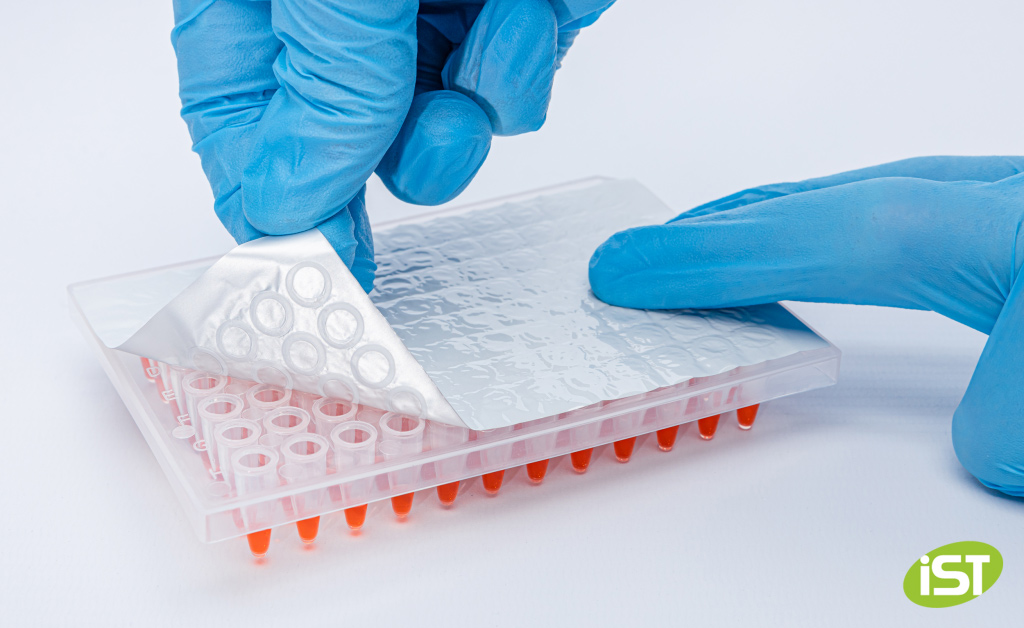Microplate sealing films are used to hermetically seal microplates, keeping them air- and water-tight.
An introduction to microplates
Microplates are widely used for quantitative analysis and testing of analytes and biochemical processes in science, academia and industry. Biological, chemical or physical reactions take place within the microplate’s wells where they can be observed and analysed.
While 96-well plates are standard, microplates with between 6 and 9600 wells are now being produced in a range of designs and materials to suit every application.
Microplate Sealing Films – what are they?
Microplate Sealing films act as a barrier separating substrates within the wells from the surrounding environment. Sealing films are designed to prevent evaporation, contamination, cross-contamination and leakage during storage, transport and experimentation.
Films need to be strong and secure, allowing colorimetric and other types of analysis without influencing results.
Different film types are designed to be compatible with specific equipment and conditions, for example, changes in temperature and pressure. This specificity is achieved via the use of appropriate materials, reliable adhesives and proficient manufacturing.
PCR Testing – Can the film stand the heat?
In PCR (Polymerase Chain Reaction) testing, DNA strands are separated using heat during the denaturation phase. This process involves repeated temperature fluctuations.
Microplates for thermocycling are generally made of polypropylene or the cheaper alternative, polycarbonate.
Whilst these materials do have some thermostability, expansion and contraction of the plates put pressure on the integrity of the seal.
It is therefore essential to choose the right quality and type of film to ensure seals stay intact at each and every well throughout each process.
To find out more, read iST’s Guide to Microplates and Sealing Films for qPCR and PCR.
Adhesive – Pressure to perform
Microplates are made of different materials which will suit different purposes. The same can be said of microplate sealing films and adhesives. Film adhesives need to ‘take the strain’ as they withstand stress from chemical changes in samples, temperature fluctuations and pressure changes of up to 2 bar in each well.
Adhesive material must perform consistently and reliably, coping with changes within wells as well as in the dimension and shape of microplates. This flexibility should not compromise performance, any adhesive should be robust enough to function well.
Quality Control
Choice of the inferior or incorrect film is at best inconvenient, at worst costly, time-consuming and detrimental.
With such high demands placed upon them, seals have to be fit for purpose. Whether you are looking to supply films or if you are the end user, source a manufacturer with a reputation for reliability and consistently high quality. The best manufacturers have experience and a comprehensive understanding of requirements in each process and will carry out rigorous product testing.
Summary
Compromising on quality when purchasing microplate sealing films is almost certainly a false economy. After spending time, effort and expense, you need to be sure that you have chosen products and equipment you can rely on. Choose from a manufacturer you can trust to protect and preserve the reputation you have worked hard to establish.
For more information about our range of products or to order your samples, get in touch with us today!

